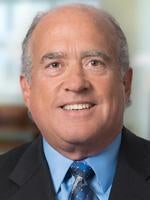Two recent tax court cases paint an ominous picture for professionals and investors who participated in listed syndicated conservation easement transactions. Coming on the heels of the Fisher conviction and his lengthy sentence; these cases show how the evidence in IRS civil proceedings may lead to criminal exposure for professionals and significant liabilities for investors.
In Oconee, the Tax Court found that the donor, through the syndicator, had a meeting of the minds with the appraiser where the parties agreed on the appraised value through evidence of emails and testimony. For example, on November 18th the parties were sent an updated “schedule show[ing] an estimated charitable contribution deduction, before carve-outs, of $60,608,700. Significantly, that figure was within 1% of the $60 million projection Mr. Novak had supplied at his initial meeting with Mr. Ciavola in February 2015” and before receiving an appraisal for the tract. They were assured by Mr. Freeman, the promoter, that “[w]e all have the window and need to work within that window. The appraisers are pulling the exact figures together... The window you have is within the ballpark of reality and from that you all need to decide whether or not you are moving forward,” meaning their appraisal would be close in value to their revised easement numbers. Notably, the meeting of the minds did not require “testimony that someone ‘instructed the appraisers as to value’” rather could be found by “incessant communications among the Reynoldses, their agents, and the appraisers.” The court noted that “[f]rom beginning to end, it was priced as a multiple of the promised tax deduction” and for these that the appraisal was not a “qualified appraisal” they “had knowledge of facts that would cause a reasonable person to expect the appraiser falsely to overstate the value of the donated property.” “A person who achieves an advance agreement with an appraiser that property will be overvalued—knowing that it is being overvalued—cannot establish good faith reliance on professional advice that the appraisal is acceptable.” The court disallowed the deduction in full as well as came down hard on penalties imposing the 40% gross overstatement penalty and a 20% penalty on the valuation misstatement.
In Mill Road, the IRS sought fraud penalties alleging, in part, that the investment was fraudulent because the taxpayer knew it was too good to be true. The court considered the purchase price of the property and indicated “the sale for $1 million is evidence that these higher appraised values bore no relation to the tract’s actual fair market value.” The Tax Court declined to assess fraud penalties, however noting that, “many of the facts the Commissioner relies on are beside the point for this purpose” and may have “undermined the value petitioner claimed and deducted... but these facts, without more, do not show any ‘false’-ness or deception by [the appraiser].”. In addition, the Court found “[t]he actual concrete facts underlying most of the issues in this case were largely undisputed, and most in fact were stipulated. This is not a case in which witnesses were sharply cross-examined about income amounts or expenditures.”
Mill Road and Oconee both address the IRS’s position that the funds “falsely” overstated appraisals. The results are informative. In Oconee the Court found the appraiser and taxpayer “achieved an advanced agreement with the appraiser that the property will be overvalued,” yet, the IRS did not ask for fraud penalties. In Mill Road, the IRS sought fraud penalties but didn’t get them in part because of the taxpayers’ disclosures and in part because there was not enough evidence to convince the Tax Court of fraud, the standard of proof of which is very high. Further, the court noted it is, “[i]mportant to our determination that the fraud penalty is not applicable is Mill Road 36’s express disclosure on its tax return of the principal facts about the easement contribution” and by expressly following the reporting requirements and attaching their Form 8283, the court found “Mill Road 36’s compliant reporting was starkly at odds with an intention to conceal.”
There are some in the IRS who believe the IRS should seek fraud penalties even when no badges of fraud are present. The IRS’s tactics and the Oconee and Mill Road decisions leave landowners, professionals, and investors in a bind. On one hand, disclosure prevented fraud penalties in Mill Road, but on the other hand, the IRS was able to use testimony and documents to show an improper meeting of the minds in Oconee.
There is no one-size-fits-all approach that will work. The IRS is looking for the most in terms of penalty assertions in every case. Civil testimony in tax court cases can be presented to a Grand Jury. Given the risks, professionals and investors who receive a civil or grand jury subpoena should retain counsel who can help them navigate their civil and criminal exposure before responding.






 />i
/>i

